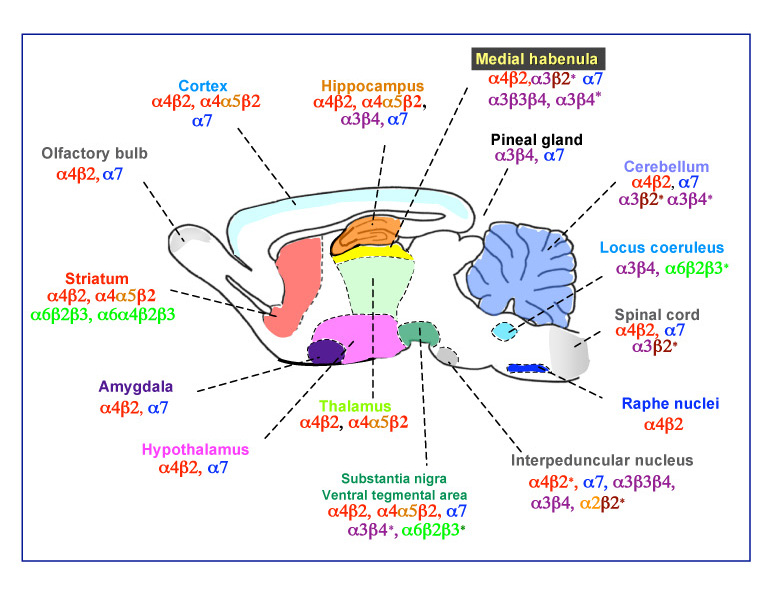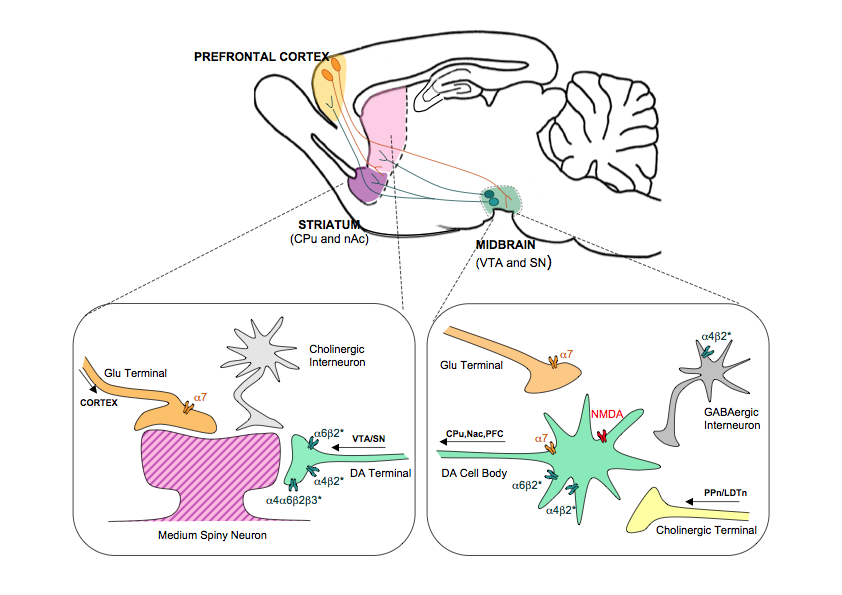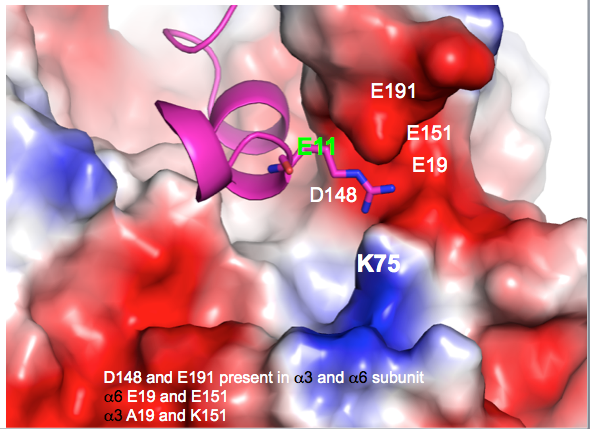Gotti Cecilia
 Research associate
Research associate
Via Luigi Vanvitelli 32
20129 Milano
Tel 02-50316974
Fax 02-7490574
Questo indirizzo email è protetto dagli spambots. È necessario abilitare JavaScript per vederlo.
Neuronal nicotinic receptors: from structure to function
Research summary
Ionotropic neuronal nicotinic acetylcholine receptors (nAChRs) are a heterogeneous class of cationic channels that are widely distributed in the nervous system and whose opening is controlled by the endogenous neurotransmitter acetylcholine (Ach). They consist of five subunits, and their different subunit composition generate distinct receptor subtypes with particular functional responses to Ach and drugs. The activation of nAChRs in target cells, may mediate fast synaptic transmission, or modulate the release of almost all neurotransmitters. The receptors are involved in a large number of physiological functions in the central and peripheral nervous systems, and changes in their number and/or function are associated with various pathophysiological conditions. They are also the targets of nicotine (the most widely used drug of abuse), whose complex activities in the nervous system are due to its ability to mimic the activity of Ach.
Research’s topics
Identifying and characterising the nAChR subtypes expressed in different areas of the CNS, and studying their involvement in physiological functions and various pathological conditions, including Alzheimer’s disease and Parkinson’s disease, some forms of epilepsy, depression, autism, and schizophrenia.


Studying the molecular mechanisms by which chronic nicotine exposure differentially affects the number, subunit composition, stoichiometry, functional state and trafficking of some nAChR subtypes and how this may lead to changes in neuronal plasticity at molecular, cellular and circuit level.

Using complementary approaches ranging from chemistry to molecular and cell biology and morphology, biochemistry and electrophysiology, and from in vitro functional assays to behavioural studies, to identify and characterize the effects of newly generated nicotinic drugs.

Representative publications
Colombo SF, Mazzo F, Pistillo F, Gotti C (2013)
Biogenesis, trafficking and up-regulation of nicotinic ACh receptors. Biochemical pharmacology 86: 1063-73
Mazzo F, Pistillo F, Grazioso G, Clementi F, Borgese N, Gotti C, Colombo SF (2013)
Nicotine-modulated subunit stoichiometry affects stability and trafficking of alpha3beta4 nicotinic receptor. The Journal of neuroscience 33: 12316-28
Sala M, Braida D, Pucci L, Manfredi I, Marks MJ, Wageman CR, Grady SR, Loi B, Fucile S, Fasoli F, Zoli M, Tasso B, Sparatore F, Clementi F, Gotti C (2013)
CC4, a dimer of cytisine, is a selective partial agonist at alpha4beta2/alpha6beta2 nAChR with improved selectivity for tobacco smoking cessation. British journal of pharmacology 168: 835-49
Tasso B, Novelli F, Sparatore F, Fasoli F, Gotti C (2013)
(+)-Laburnamine, a natural selective ligand and partial agonist for the alpha4beta2 nicotinic receptor subtype. Journal of natural products 76: 727-31
Counotte DS, Goriounova NA, Moretti M, Smoluch MT, Irth H, Clementi F, Schoffelmeer AN, Mansvelder HD, Smit AB, Gotti C, Spijker S (2012)
Adolescent nicotine exposure transiently increases high-affinity nicotinic receptors and modulates inhibitory synaptic transmission in rat medial prefrontal cortex. FASEB journal : official publication of the Federation of American Societies for Experimental Biology 26: 1810-20
Pucci L, Grazioso G, Dallanoce C, Rizzi L, De Micheli C, Clementi F, Bertrand S, Bertrand D, Longhi R, De Amici M, Gotti C (2011)
Engineering of alpha-conotoxin MII-derived peptides with increased selectivity for native alpha6beta2* nicotinic acetylcholine receptors. FASEB journal : official publication of the Federation of American Societies for Experimental Biology 25: 3775-89
Gotti C, Guiducci S, Tedesco V, Corbioli S, Zanetti L, Moretti M, Zanardi A, Rimondini R, Mugnaini M, Clementi F, Chiamulera C, Zoli M (2010)
Nicotinic acetylcholine receptors in the mesolimbic pathway: primary role of ventral tegmental area alpha6beta2* receptors in mediating systemic nicotine effects on dopamine release, locomotion, and reinforcement. The Journal of neuroscience : 30: 5311-25
Moretti M, Mugnaini M, Tessari M, Zoli M, Gaimarri A, Manfredi I, Pistillo F, Clementi F, Gotti C (2010)
A comparative study of the effects of the intravenous self-administration or subcutaneous minipump infusion of nicotine on the expression of brain neuronal nicotinic receptor subtypes. Molecular pharmacology 78: 287-96
Gotti C, Clementi F, Fornari A, Gaimarri A, Guiducci S, Manfredi I, Moretti M, Pedrazzi P, Pucci L, Zoli M (2009)
Structural and functional diversity of native brain neuronal nicotinic receptors. Biochemical pharmacology 78: 703-11
Grady SR, Moretti M, Zoli M, Marks MJ, Zanardi A, Pucci L, Clementi F, Gotti C (2009)
Rodent habenulo-interpeduncular pathway expresses a large variety of uncommon nAChR subtypes, but only the alpha3beta4* and alpha3beta3beta4* subtypes mediate acetylcholine release. The Journal of neuroscience : 29: 2272-82
Millar NS, Gotti C (2009)
Diversity of vertebrate nicotinic acetylcholine receptors. Neuropharmacology 56: 237-46
Gotti C, Moretti M, Meinerz NM, Clementi F, Gaimarri A, Collins AC, Marks MJ (2008)
Partial deletion of the nicotinic cholinergic receptor alpha 4 or beta 2 subunit genes changes the acetylcholine sensitivity of receptor-mediated 86Rb+ efflux in cortex and thalamus and alters relative expression of alpha 4 and beta 2 subunits. Molecular pharmacology 73: 1796-807











